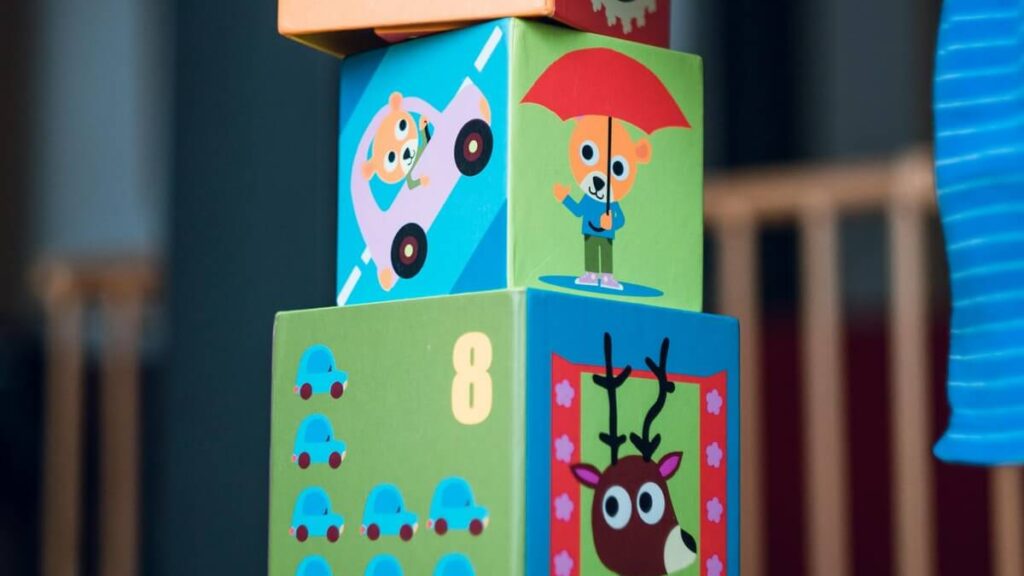Introduction: Beyond Entertainment
In an era defined by the omnipresence of digital stimuli, the modern parenting paradigm faces a unique challenge: how to reclaim the essence of childhood learning from passive consumption. The quest is for engagement that is both meaningful and enjoyable. This is the genesis of “Smart Fun”—a pedagogical philosophy that seamlessly integrates intellectual stimulation with the intrinsic joy of play. It reframes education not as a chore to be endured, but as an adventure to be embarked upon within the very walls of one’s home.
This concept transcends mere worksheets or screen-based quizzes. It is about transforming the domestic environment into a dynamic laboratory of curiosity. For the discerning parent, guardian, or educator, this guide serves as a definitive resource, exploring sophisticated, high-impact educational games and activities designed to cultivate creativity, critical thinking, and a lifelong passion for discovery in your children.
Why ‘Smart Fun’ Matters: The Neuroscience of Playful Learning
Play is often miscategorized as a frivolous break from “real” learning. On the contrary, play is the fundamental mechanism of learning in childhood. Child psychologists and neuroscientists emphasize that unstructured and structured play are essential for developing crucial executive functions—the high-level cognitive skills that govern planning, problem-solving, and emotional regulation.
“Smart Fun” operationalizes this theory. It moves beyond rote memorization, which creates static knowledge, to active discovery, which builds dynamic understanding. When a child experiments with baking soda and vinegar, they are not just making a mess; they are engaging in hypothesis testing and observing a chemical reaction firsthand. This hands-on, multi-sensory engagement strengthens neural pathways far more effectively than reading a textbook chapter on acids and bases. This approach fosters a growth mindset, teaching children that intelligence is not fixed but can be cultivated through effort and experimentation.
Core Principle: Smart play is the scaffolding upon which children build complex cognitive and emotional frameworks. It connects abstract concepts to tangible experiences, making learning profound, enjoyable, and enduring.
The Unbounded Classroom: Indoor Educational Expeditions
A lack of outdoor space is not a barrier to intellectual exploration. The home is a rich ecosystem of learning opportunities, requiring only creativity and a shift in perspective.
The Kitchen Science Conclave (DIY Science) The kitchen is a premier, low-cost laboratory. Move beyond the volcano and explore more complex concepts.
- Non-Newtonian Fluids: Create “oobleck” (cornstarch and water). This teaches fluid dynamics as the substance acts as both a solid and a liquid.
- Density Towers: Layer different liquids (honey, dish soap, water, vegetable oil) in a tall glass to provide a stunning visual lesson on density and mass.
- Kitchen Chemistry: Use red cabbage juice as a natural pH indicator to test the acidity or alkalinity of various household items, from lemon juice to baking soda.
The Collaborative Chronicle (Story Chain Game) This activity is a powerhouse for developing narrative structure, vocabulary, and collaborative thinking. One person begins a story (“The rusty key turned in a lock that hadn’t been opened in 100 years…”), and each family member adds a sentence.
- Advanced Variant: Introduce “Story Stones” (rocks painted with simple images—a door, a moon, a ship) or genre prompts (“Make it a mystery,” “Now add a sci-fi element”) to guide the narrative and challenge creative flexibility.
The Mathematical Quest (Math Treasure Hunt) Transform abstract math into a thrilling adventure. Hide clues around the house, with each clue presenting a math problem tailored to your child’s level.
- Ages 5-7: “How many steps from the sofa to the fridge? Take that number and add 3. Look under the chair with that number.”
- Ages 10-13: “The area of the kitchen rug is 24 sq ft. If its width is 4 ft, what is its length? Go to the room with that many windows.” This applies mathematical formulas to the real world.
The Upcycled Atelier (STEAM Art Challenges) Foster engineering and design thinking by imposing creative constraints. Provide a box of “junk”—cardboard tubes, plastic bottles, straws, tape—and issue a challenge.
The Challenge: "Build a bridge that can span a 12-inch gap and support the weight of this apple." Or, "Design a 'Rube Goldberg' machine to deliver a snack to the dog." This teaches physics, iteration, and resilience in the face of failure.
Strategic Showdowns (Educational Board Games) Board games are offline simulators for complex decision-making.
- Scrabble/Bananagrams: Enhance vocabulary, spelling, and linguistic strategy.
- Chess: The ultimate game of logic, foresight, and pattern recognition.
- Ticket to Ride: Teaches geography, resource management, and long-term planning.
Curating the Digital Sandbox: Making Screen Time Count
Technology is not an adversary; it is a powerful tool that demands curation. The critical distinction lies between passive consumption (watching videos) and active creation (coding, designing, or problem-solving).
A Measured Approach to Digital Learning: Balance is paramount. Supplement hands-on activities with high-quality digital tools, but never let them become a substitute for real-world interaction.
Recommended Platforms for Active Engagement:
- Khan Academy Kids: A holistic, curriculum-aligned platform for early learners.
- Prodigy Math: A role-playing game (RPG) that masterfully gamifies math concepts, making practice compelling.
- Scratch & Scratch Jr. (from MIT): The gold standard for introducing visual block-based programming. Children don’t just play games; they build them.
- Duolingo: Leverages gamification for impressive language acquisition.
- Google Earth: A breathtakingly interactive tool for exploring geography, culture, and ecology.
- BrainPOP: Offers animated, digestible video lessons on hundreds of topics, ideal for visual learners.
The Backyard Biome: Al Fresco Learning
The outdoors offers a multi-sensory classroom that is impossible to replicate.
a. The Naturalist’s Logbook (Nature Scavenger Hunt) Elevate the standard hunt. Provide a journal and ask your child to not only find items (a pinecone, a ‘Y’-shaped twig, a smooth stone) but to document them.
- Activity: Have them sketch the item, describe its texture, and hypothesize its purpose in the ecosystem. This hones observation skills and scientific classification.
b. The Kinetic Calculator (Math Hopscotch) Inscribe a hopscotch grid with chalk, but replace numbers with simple equations (3+4, 9-2) or multiplication problems. They must solve the problem to land on the square. This reinforces math facts while engaging their kinesthetic intelligence.
c. The Suburban Homestead (Garden Classroom) Gardening is a long-term lesson in biology, responsibility, and patience.
- Activities: Track plant growth in a journal, learn about photosynthesis, start a compost pile to understand decomposition, or build an “insect hotel” to study local entomology.
d. The Solar Clock (Shadow Experiments) This is a tangible introduction to astronomy and time.
- Activity: Have your child stand in the same spot and trace their shadow with chalk at 9 AM, 12 PM, and 3 PM. This creates a DIY sundial and sparks profound questions about the Earth’s rotation.
The Developmental Blueprint: Tailoring Smart Fun by Age
Activities must be developmentally appropriate to be effective. A 4-year-old and a 14-year-old have vastly different learning needs.
Ages 3–5: The Sensory Scholars Focus: Fine motor skills, sensory integration, and language.
- Sensory Bins: Fill a tub with rice, dried beans, or water. Hide letters, numbers, or shapes for them to find.
- Practical Life Skills (Montessori): Set up stations for pouring water between two small pitchers, spooning beans, or practicing with buttons and zippers.
- Sing-Along Rhymes: Strengthens phonemic awareness and memory recall.
Ages 6–9: The Curious Constructors Focus: Logic, reading comprehension, and basic scientific principles.
- Simple Machines: Use LEGOs or household items to build and test levers, pulleys, and inclined planes.
- Creative Journaling & Comic Creation: Provide a blank notebook and prompts. This encourages written expression, storytelling, and emotional processing.
- Introduction to Coding: Use visual apps like Code.org or Scratch Jr. that teach the fundamentals of sequencing and loops.
Ages 10–13: The Emerging Analysts Focus: Critical thinking, abstract reasoning, and independence.
- Real-World Budgeting: Give them a (hypothetical or real) budget to plan a week’s meals or a family outing. They must research costs, compare options, and justify their decisions.
Debate Club: Choose a low-stakes topic ("Are school uniforms a good idea?") and have a structured family debate, teaching them to form an argument and use evidence.- STEM Kits: Invest in subscription boxes (like KiwiCo’s ‘Tinker Crate’) or one-off kits for robotics, simple electronics, or chemistry.
Ages 14 and Above: The Future Innovators Focus: Real-world application, advanced problem-solving, and specialization.
- Stock Market Simulations: Use online platforms to learn the fundamentals of investing with virtual money.
- DIY Passion Projects: Encourage them to build a simple website for a hobby, write and record a podcast, or film and edit a short documentary on a family member.
- Model UN / Global Challenges: Research a global issue (e.g., water scarcity) and have them prepare a presentation on potential solutions, technologies, and policy changes.
The Parent as Facilitator: Shifting from Instructor to Guide
Your role in “Smart Fun” is not to be a teacher who dispenses answers. It is to be a facilitator who asks the right questions.
- Ask, Don’t Tell: When a child’s block tower falls, resist saying “You need a wider base.” Instead, ask, “What do you think made it fall? What could we try differently?” This is the Socratic method, and it teaches them to analyze and solve problems independently.
- Praise the Process, Not Just the Product: Focus on their effort, strategies, and resilience (“I love how you kept trying different ways to make that bridge work!”). This reinforces the growth mindset.
- Model Curiosity: Let your child see you learning. Say “I don’t know the answer to that, let’s find out together.”
Architecting the Day: The Rhythm of Smart Fun
Consistency is the scaffold for sustainable learning. A routine, even a loose one, provides cognitive anchoring and reduces decision fatigue for both you and your child.
- Morning (Cognitive Kickstart): Brain-stimulating, quieter activities. Puzzles, reading, or a “Question of the Day” on a whiteboard.
- Afternoon (Creative Core): Hands-on, often messier activities. STEAM projects, art, music practice, or baking.
- Late Afternoon (Kinetic Release): Outdoor or physical play. Hopscotch, gardening, or a family walk.
- Evening (Reflective Close): Collaborative, calming activities. A strategic board game, a family read-aloud, or discussing the “high” and “low” of the day.
Learning in the Mundane: Discovering Education in Daily Tasks
The most profound learning moments often hide in plain sight. “Smart Fun” is about finding the educational value in everyday chores.
- Cooking/Baking: The ultimate STEAM activity. It is math (measuring, fractions, ratios), science (chemical reactions, heat transfer), and reading (following a recipe).
- Shopping: A lesson in financial literacy. Have older kids calculate unit pricing, and younger kids identify shapes and colors.
- Cleaning/Tidying: Teaches categorization, sorting, and personal responsibility.
- Laundry: A simple lesson in chemistry (what do detergents do?) and physics (how does a dryer work?).
The Ripple Effect: Beyond Academics to Family Cohesion
The benefits of “Smart Fun” are not purely academic. They are deeply relational. When a family collaborates to solve a puzzle, build a fort, or experiment in the kitchen, they are doing more than learning. They are building a shared history. This process enhances familial communication, models effective teamwork, and builds a powerful internal culture of curiosity. These shared experiences are the bedrock of strong, resilient family bonds and create a positive association with learning that will last a lifetime.
Conclusion: The Enduring Legacy of Playful Pedagogy
“Smart Fun” is more than a strategy; it’s a paradigm shift. It is the conscious decision to celebrate curiosity and weave learning into the fabric of daily life. In a world accelerating toward specialization and digital saturation, the greatest gift we can give the next generation is not a head full of memorized facts, but a mind that is agile, resilient, creative, and endlessly curious.
By transforming your home into a vibrant hub of playful learning, you are not just preparing your child for academic success. You are nurturing an innovator, a problem-solver, and an empathetic human being who understands that learning is not something you have to do—it is the most exciting thing you get to do.



